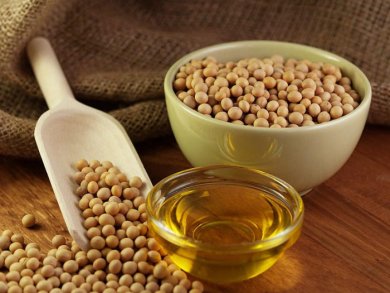High oleic soybeans come to Canada

High oleic soybeans remain a small part of North America’s soybean industry.
In 2022, farmers in 13 states grew about 800,000 acres of high-oleic beans, says the United Soybean Board. That’s less than one percent of the 88 million acres of soybeans planted in the United States in 2022.
However, the United Soybean Board remains enthusiastic about high oleic beans, which are better suited than conventional soybeans for processing into vegetable oil.
The organization expects high-oleic acres to reach one million by 2024.
“As we look to the 2023 growing season, rising demand across the supply chain means high oleic soybeans represent a strong value proposition for growers, grain handlers, food processors and retailers,” says a board report on high oleic beans.
In Canada, the soy industry is also shifting to meet the emerging demand for healthier soybean oil.
Sevita International, an Ontario soybean company, has developed a non-genetically modified, high oleic soybean variety called Alinova.
This mid-to-late season variety is suited for growing conditions in Ontario and Quebec.
“We are very proud to have developed these varieties, which are a first for Canada, and we are fully committed to continuing our investment in genetics to provide Canadian growers with high-yielding and high-value production opportunities in years to come,” said Sandy Hart, Sevita International’s general manager.
Sevita plans to release more high-oleic varieties in the future to take advantage of the massive global market for vegetable oils.
“High-oleic soybeans offer an oil profile that is comparable to olive or canola oils. It is considered to have greater oxidative stability, compared to standard soybean oil, resulting in extended shelf life of food products…. (It) has less saturated fat than commodity soybean oil,” Sevita said in a press release.
Sevita contracts production with Canadian farmers and supplies food-grade (non-GM) soybeans to food manufacturers in Asia, Europe and North America. The beans are used to make tofu, soymilk, miso and soy sauce.
Most of the food-grade soybeans in Canada are grown in Ontario and Quebec.
In 2021, farmers in those provinces seeded 3.9 million acres of soybeans. Of that, 15 to 20 percent was food grade soybeans.
However, Sevita has been making a push into Western Canada.
It has developed food grade soybean varieties suited for Manitoba’s climate and hopes to expand production in the coming years.
“The strategic goal is to diversify the geographies from which we’re contracting our (production),” Hart said in 2022.
“If we have a poor production season in Ontario or Quebec, and we’re short on a particular contract, we can’t just go into the market and buy non-GMO beans.”
If Manitoba farmers are receptive to food grade soybeans, acres could become a significant crop in the province.
“I’d like to think, with the right varieties … maybe that 100,000-acre mark could be (reasonable) five, six or eight years from now,” Hart said.
Read also
Wheat in Southern Brazil Impacted by Dry Weather and Frosts
Oilseed Industry. Leaders and Strategies in the Times of a Great Change
Black Sea & Danube Region: Oilseed and Vegoil Markets Within Ongoing Transfor...
Serbia. The drought will cause extremely high losses for farmers this year
2023/24 Safrinha Corn in Brazil 91% Harvested
Write to us
Our manager will contact you soon



